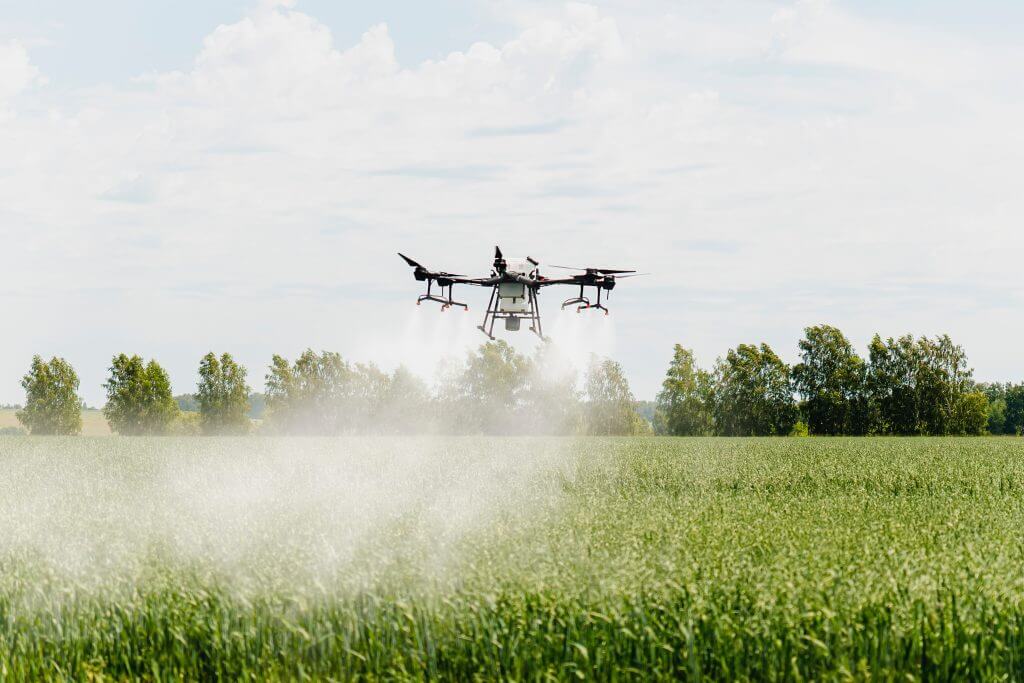
Launching a drone business isn’t easy.
You’ve got the equipment. The FAA certifications. The work lined up.
But you’re still grounded, because you’re missing one thing:
Insurance.
This is the exact position one drone operator found himself in just last week. He’d recently purchased a brand-new DJI Agras T50, one of the most powerful ag drones on the market, and was gearing up for aerial spraying work across rural Arkansas.
The drone alone was worth over $30,000.
He had contracts ready. Crops waiting. Weather windows closing.
But without the right coverage, including liability, hull, and chemical application endorsements, he, couldn’t legally fly.
Within 48 hours of reaching out to BWI, he was fully covered and in the air.
Step One: Application + Risk Review
The operator submitted his online application on a Thursday, selecting BWI after comparing multiple brokers. What made the difference?
- Fast response times
- Deep drone underwriting knowledge
- And real support—not a chatbot
As soon as we received his application, we went to work.
His drone was classified as a heavy UAS, weighing more than 55 pounds. That placed him under Part 137 operations for chemical spraying, with specific insurance and FAA documentation requirements.
We reviewed:
- FAA remote pilot certificate
- Waiver status under FAA 44807
- Flight hours on UAS platforms
- Experience flying the specific DJI Agras model
Within minutes, we had the information under review by a senior underwriter.
Step Two: Working with the Carrier
This is where most drone policies stall out.
Many underwriters don’t understand drone operations, especially when spraying herbicides or operating under FAA waivers. But at BWI, we’ve worked with Global Aerospace, Great American, and USAIG on hundreds of drone risks, and know exactly how to present them.
We anticipated the questions:
- What chemicals will be sprayed?
- How many flight hours does the operator have?
- Was there formal training on the Agras T50?
- Is this aircraft leased, borrowed, or owned outright?
Because we had that info ready, we were able to respond instantly. No delays.
Step Three: Policy Options & Coverage Explained
By Friday morning, we presented the operator with two options:
Option 1: Global Aerospace
- $1,000,000 liability
- $30,000 hull coverage
- Standard war, terrorism, and contractual liability limits
- Quote pending documentation of training and waiver
Option 2: Great American
- $1,000,000 liability
- $15,500 hull value
- Specific coverage for aerial application (chemicals)
- Approved pilot clause based on Part 107 certificate
We explained the difference between occurrence-based and claims-made language. Between standard hull coverage and exclusions for “in-motion” losses. Between what’s required for ag drone spraying and what’s not.
The operator selected the second option with Great American, giving him full aerial application liability, medical coverage, and physical damage coverage with a 10% deductible.
Step Four: Bound and Ready for Business
By mid-day Friday, the operator had:
- Signed the full application
- Uploaded proof of FAA certification
- Received a formal quote breakdown
- Processed payment online
- And received proof of insurance by the end of the day
That weekend, he was in the field, flying crops, fulfilling contracts, and operating legally with confidence.
Why It Matters
This wasn’t just a win for the operator. It was a reminder of why insurance matters so much in the drone industry.
You can’t spray without it.
Part 137 work requires insurance by nearly every state-level or commercial client.
You can’t bid big jobs without it.
Most ag co-ops, growers, and vineyards want COIs in hand before signing contracts.
You can’t scale a business without it.
Without coverage, one battery fire, drone loss, or incident could wipe out your capital.
For this operator, the policy we wrote was more than paperwork, it was a green light to start growing revenue.
What We Offer at BWI
We’ve been writing aviation insurance since 1977, but we don’t treat drones like airplanes.
We’ve built a dedicated drone insurance program around:
- Part 107 commercial operators
- Ag spraying under 44807 + Part 137
- Mapping, inspection, real estate, and cinematography
- Single drones and full fleets
- Drone businesses scaling across multiple states
And our quoting process is built for speed:
- Online applications that actually work
- Same-day phone support
- Real-time underwriter relationships
- Digital quotes and e-sign applications
Whether you’re flying a DJI Mavic 3 or a $75,000 eVTOL prototype, we’ve likely quoted it.
A Final Word to Drone Operators
If you’re flying professionally, you need insurance that’s as serious as you are.
Too many drone operators still rely on general liability policies that exclude aviation or skip hull coverage assuming their drone is cheap enough to replace until it’s not.
We believe your equipment, and your livelihood, deserve better.
So whether you’re:
- Launching your first ag drone business
- Expanding your ops across new counties
- Or just need a fast, no-nonsense quote
We’re here.
Let’s get you off the ground.
Continue Reading


